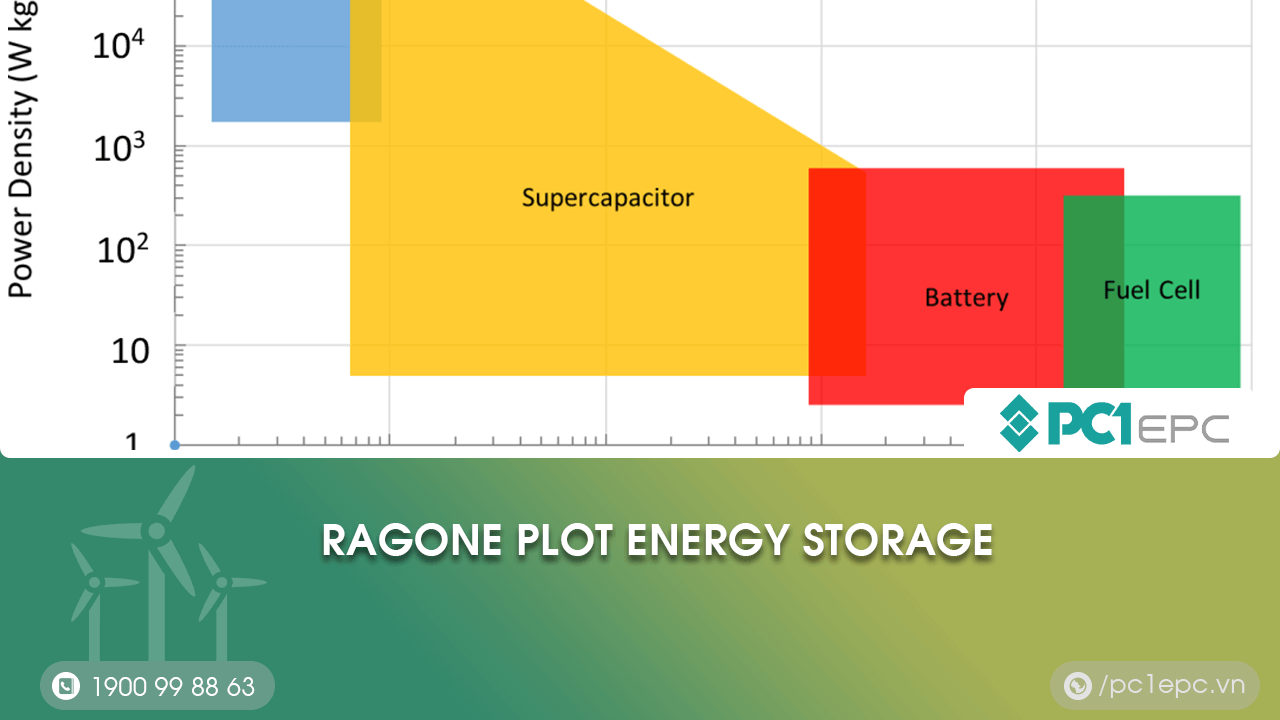Ragone plot energy storage is a powerful tool for comparing and selecting the best energy storage devices based on their power and energy density performance. This method allows you to evaluate a range of energy storage devices, including batteries, supercapacitors, flywheels, and fuel cells, to determine which one is the most suitable for your needs. Understanding the advantages and disadvantages of each device can help you make informed decisions when it comes to renewable energy storage, consumer electronics, and grid stabilization.
Introduction to Ragone plot and Energy storage
Ragone plot
Ragone plot is a chart that depicts the relationship between power and energy density of various energy storage devices, commonly used in research on batteries, fuel cells, supercapacitors, etc.
Energy storage
Energy storage is the process of storing and releasing energy for later use.
Understanding Ragone plot
Ragone plot is an important tool for evaluating and comparing different types of energy storage devices such as batteries, fuel cells, and supercapacitors. It is named after the physicist David Vincent Ragone. The plot is commonly used in scientific and engineering fields to analyze the performance and capabilities of energy storage devices.
The Ragone plot is a two-dimensional graph with power density on the y-axis and energy density on the x-axis. The point on the graph represents a specific energy storage device and its position on the graph reflects the performance and capability of that device. The higher the point on the y-axis, the more power the device can provide. However, the higher the point on the x-axis, the more energy the device can store.
Different types of energy storage devices are represented by different curves on the Ragone plot. Comparing different devices on the plot can help researchers and designers find the best energy storage device for a specific application. For example, in some high power applications, supercapacitors may be a better choice than batteries or fuel cells. However, in applications requiring long-term energy storage, batteries may be the best choice.
Types of Energy Storage Devices
- Batteries: Chemical energy is stored in a cell or a group of cells, and can be released as electric energy.
- Supercapacitors: Energy is stored in an electric field between two electrodes, and can be released quickly as electric energy.
- Flywheels: Kinetic energy is stored in a spinning rotor, and can be released as mechanical or electric energy.
- Fuel cells: Energy is produced by an electrochemical reaction between fuel and oxygen, and can be released as electric energy.
Applications of Energy Storage Devices
Energy storage devices have a wide range of applications, including:
- Consumer electronics: Batteries are commonly used in smartphones, laptops, and other portable devices.
- Electric vehicles: Batteries and supercapacitors are used to power electric cars and other vehicles.
- Renewable energy: Energy storage devices are used to store energy produced from renewable sources such as solar and wind power.
- Grid stabilization: Energy storage devices can be used to stabilize electrical grids and ensure a consistent supply of electricity.
- Aerospace: Energy storage devices are used to power satellites and other spacecraft.
- Medical devices: Batteries are used to power implantable medical devices such as pacemakers.
As technology advances and the need for more efficient and sustainable energy sources increases, the demand for energy storage devices is expected to grow in the coming years.
Conclusion
In conclusion, Ragone plot provides a clear understanding of the relationship between power and energy density of energy storage devices, enabling researchers and engineers to select the most suitable device for specific applications. The different types of energy storage devices, such as batteries, supercapacitors, flywheels, and fuel cells, have their unique strengths and limitations. However, they all play a vital role in various applications, from powering consumer electronics to supporting the stability of the electrical grid. As technology continues to advance, energy storage devices will become even more critical in meeting the growing demand for sustainable and efficient energy storage solutions.


